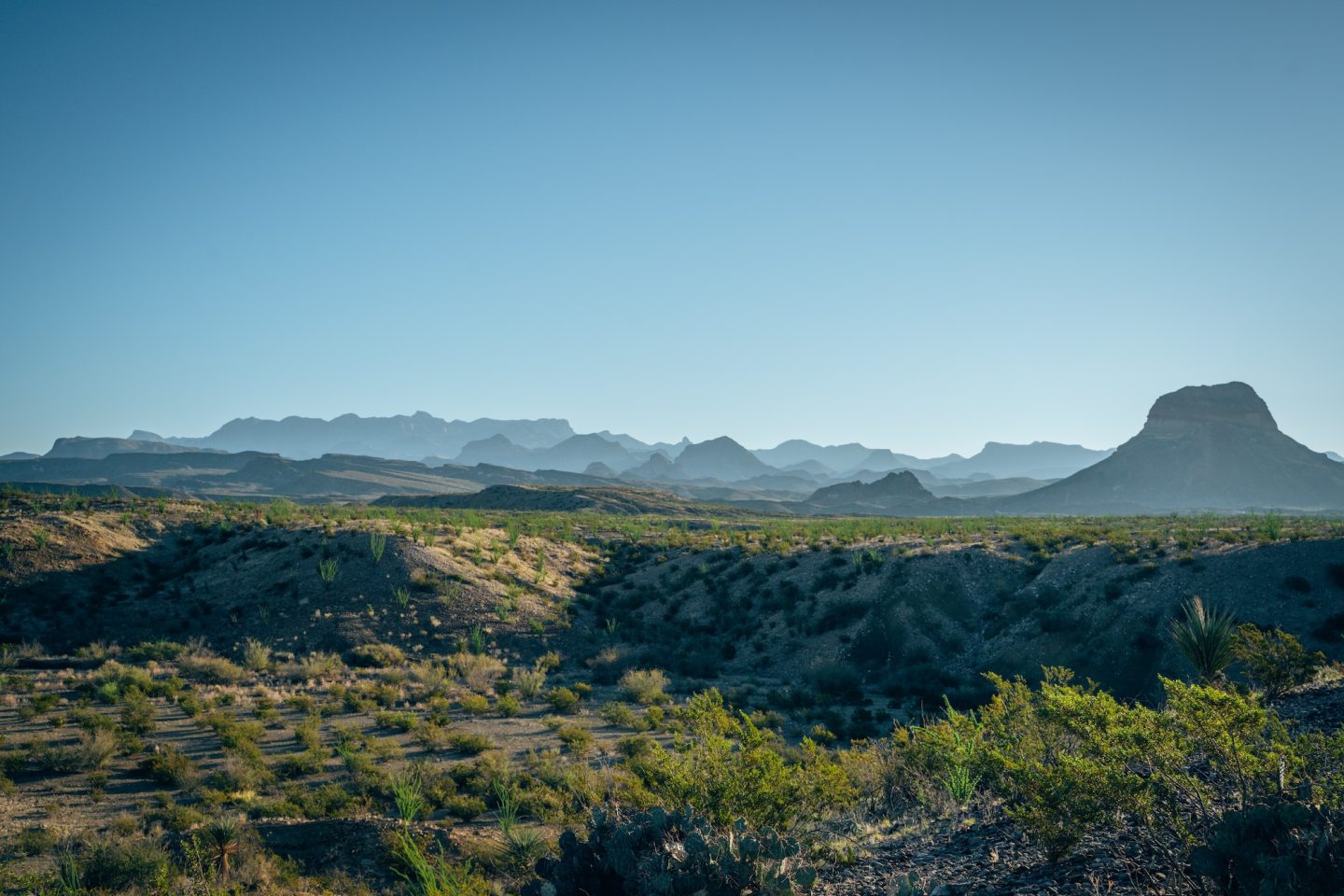
The winter months in the most of the United States can be absolutely brutal. Unpredictable cold spells and snowy storms make traveling and doing outdoor activities a challenging and difficult time. Unless you enjoy the cold and snow, in which case this article might not be for you! But if you’re someone who loves the outdoors and finds themselves wanting to escape the cold and snowy winters, then this is the list for you! While you won’t find yourself in shorts and t-shirts at most of these, you might be surprised to know that there are quite a few National Parks all over the United States, that have relatively temperate weather during the winter months. And some are even better to visit during the winter months. So if this sounds up your alley, here’s a list of the best U.S. National Parks to visit in the winter!
HOW WE CHOSE AND RANKED THESE NATIONAL PARKS
There are some National Parks that are absolutely beautiful and magical when they are covered in snow (Yosemite, Rocky Mountain, Sequoia, Mount Rainier). This article is focused on those that help you escape the colder and snowier weather. You’ll find a common theme that most of these parks are located along the southern rim of the United States. This is where temperatures are the most mild and temperate. And while we didn’t exactly rank these parks in any specific order, we did somewhat prioritize the best U.S. National Parks that are best suited to visit during winter due to extreme hot temperatures in the summer or peak season crowding.
DISCLAIMER: In almost every National Park, temperatures can differ greatly depending on your location inside the park. Areas at higher elevations are likely going to have cooler temperatures, than those at lower elevations. So while we do provide some average temperatures for each park, we strongly recommend researching further depending on when you plan to visit, and what activities you plan to do.
HALEAKALĀ NATIONAL PARK
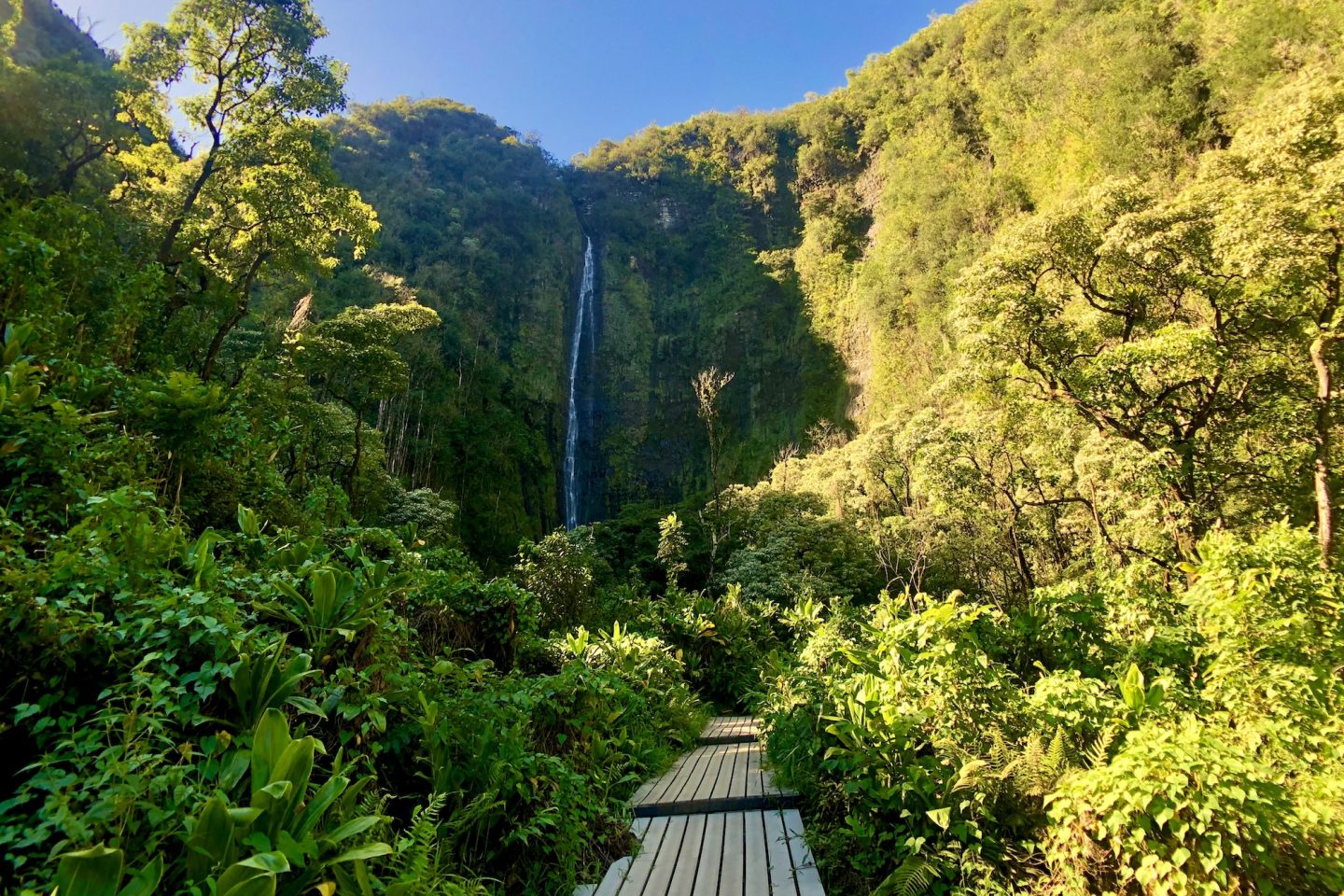
Before we touch on Haleakalā, let us first say, if you haven’t been to Hawaii before, ADD IT TO YOUR BUCKET LIST. We have a great article touching on each island, and How To Pick Which Island To Visit. But let’s talk about Haleakalā National Park!
Haleakalā National Park, located on the Hawaiian island of Maui, is a breathtaking natural wonder that encompasses the dormant Haleakalā volcano. Spanning over 33,000 acres, the park is renowned for its diverse ecosystems. Ranging from the lush coastal rainforests to the otherworldly volcanic landscapes at higher elevations. One of the park’s most iconic features is the stunning Haleakalā Crater, a massive depression with surreal, barren terrain and vibrant cinder cones. Witnessing the awe-inspiring sunrises from the summit has to be one of the most breathtaking experiences we’ve ever had. Haleakalā National Park also boasts a network of hiking trails that lead adventurers through a variety of ecological zones, showcasing the unique flora and fauna of Hawaii.
A winter vacation to Hawaii is NEVER a bad idea. And we think you should absolutely add this National Park to your next winter’s vacation list.
AVERAGE TEMPERATURES DURING THE WINTER
- Highs: 61ºF-64ºF
- Lows: 43ºF-47ºF
Check out our (Nearly) 7 Free Things To Do in Maui Hawaii article to get more inspired about visiting this magical island!
HAWAI’I VOLCANOES NATIONAL PARK
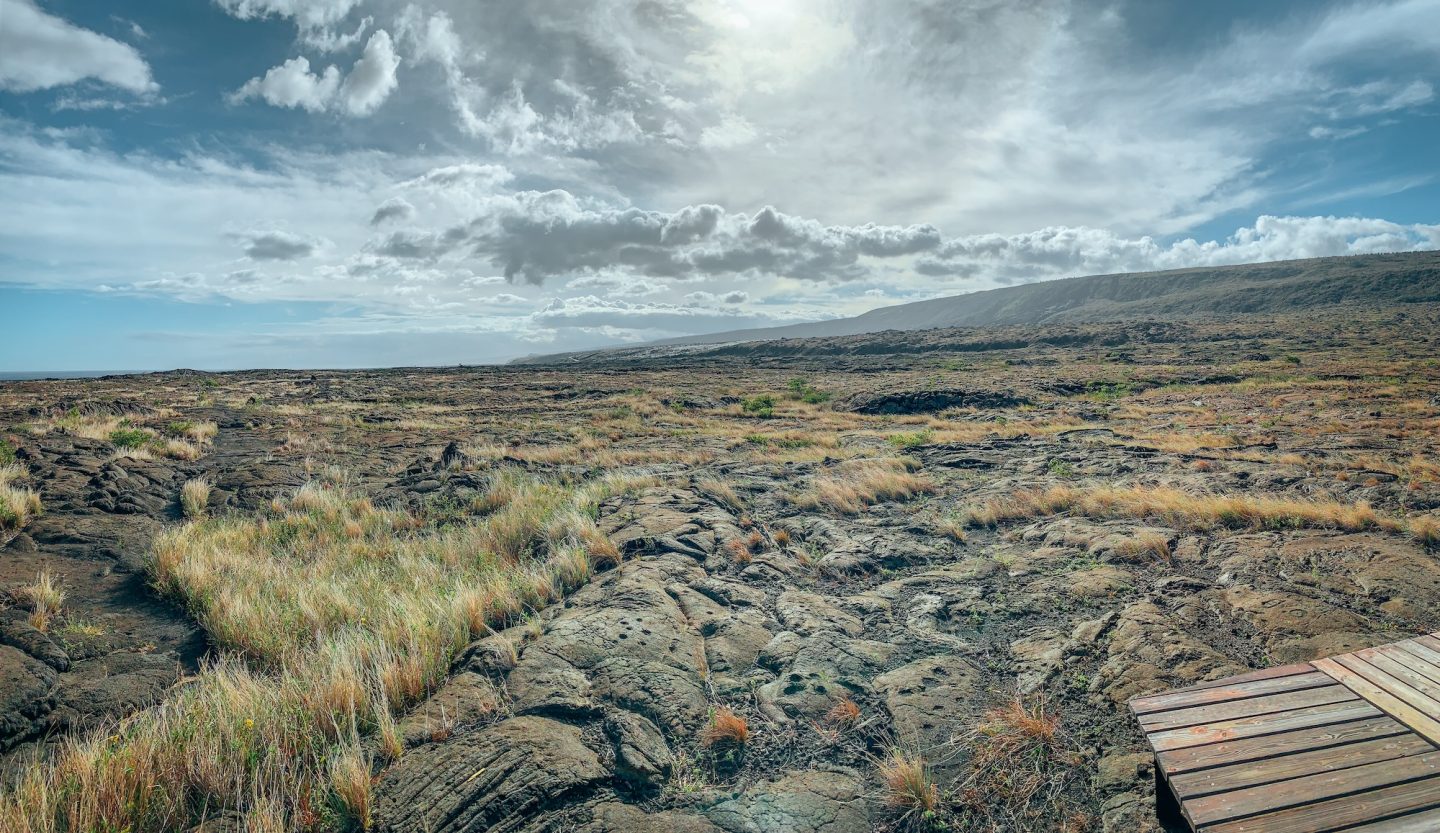
Let’s stay in this Hawaiian theme for another minute. Hawai’i Volcanoes National Park, situated on Hawaii Island, is a captivating showcase of the dynamic volcanic forces shaping Hawaii. Encompassing the active volcanoes Kīlauea and Mauna Loa, the park spans 330,000 acres. The park offers visitors the chance to witness molten lava flows and eruptions. Beyond the volcanic spectacle, the park features diverse landscapes, from lush rainforests to intriguing lava tubes. A visit to Thurston Lava Tube and exploration along the Chain of Craters Road provide a glimpse into the island’s geologic wonders.
This national park seamlessly blends scientific significance, natural beauty, and cultural heritage. This makes it a compelling destination for those intrigued by the powerful forces shaping the Hawaiian islands.
AVERAGE TEMPERATURES DURING THE WINTER
- Highs: 67ºF-70ºF
- Lows: 41ºF-51ºF
In addition to this incredible park, we also have an article touching on 7 (Nearly) Free Things To Do On Hawaii Island.
DEATH VALLEY NATIONAL PARK
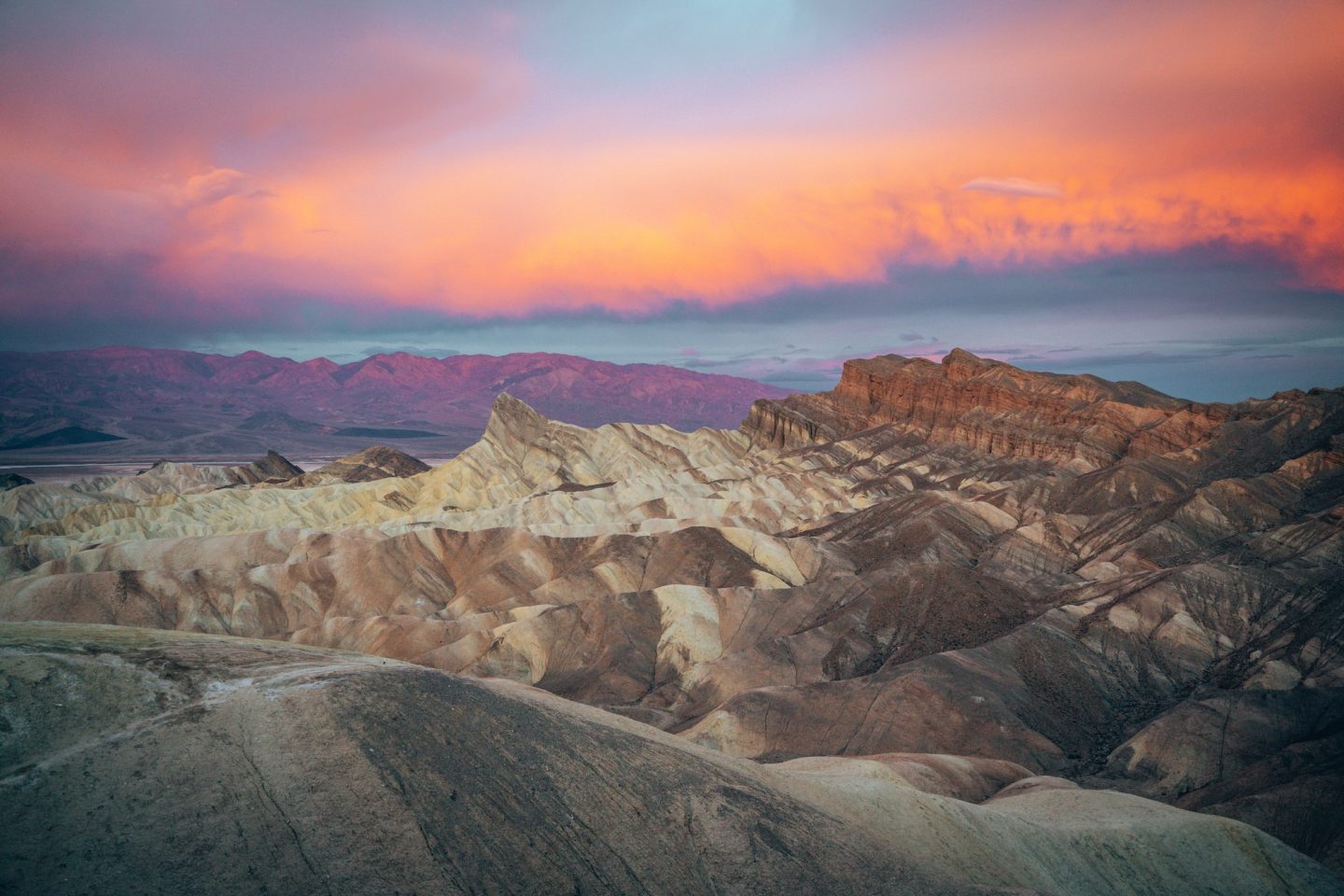
Situated in southeastern California, is Death Valley National Park. A stark and mesmerizing landscape that holds the title of the hottest place on Earth. Encompassing over 3.3 million acres, it features expansive salt flats, rugged mountains, and the iconic Badwater Basin, the lowest point in North America. The park’s diverse geology also includes colorful canyons, towering sand dunes, and ancient volcanic craters. Between April and October, temperatures can easily exceed 100ºF, making this an obvious pick to visit during the winter months where average highs range between 65ºF and 75ºF. How many places can you visit during January that provide those kinds of temps?!
AVERAGE TEMPERATURES DURING THE WINTER
- Highs: 65ºF-75ºF
- Lows: 39ºF-46ºF
Check out our Ultimate Guide To Death Valley National Park article for more info!
JOSHUA TREE NATIONAL PARK
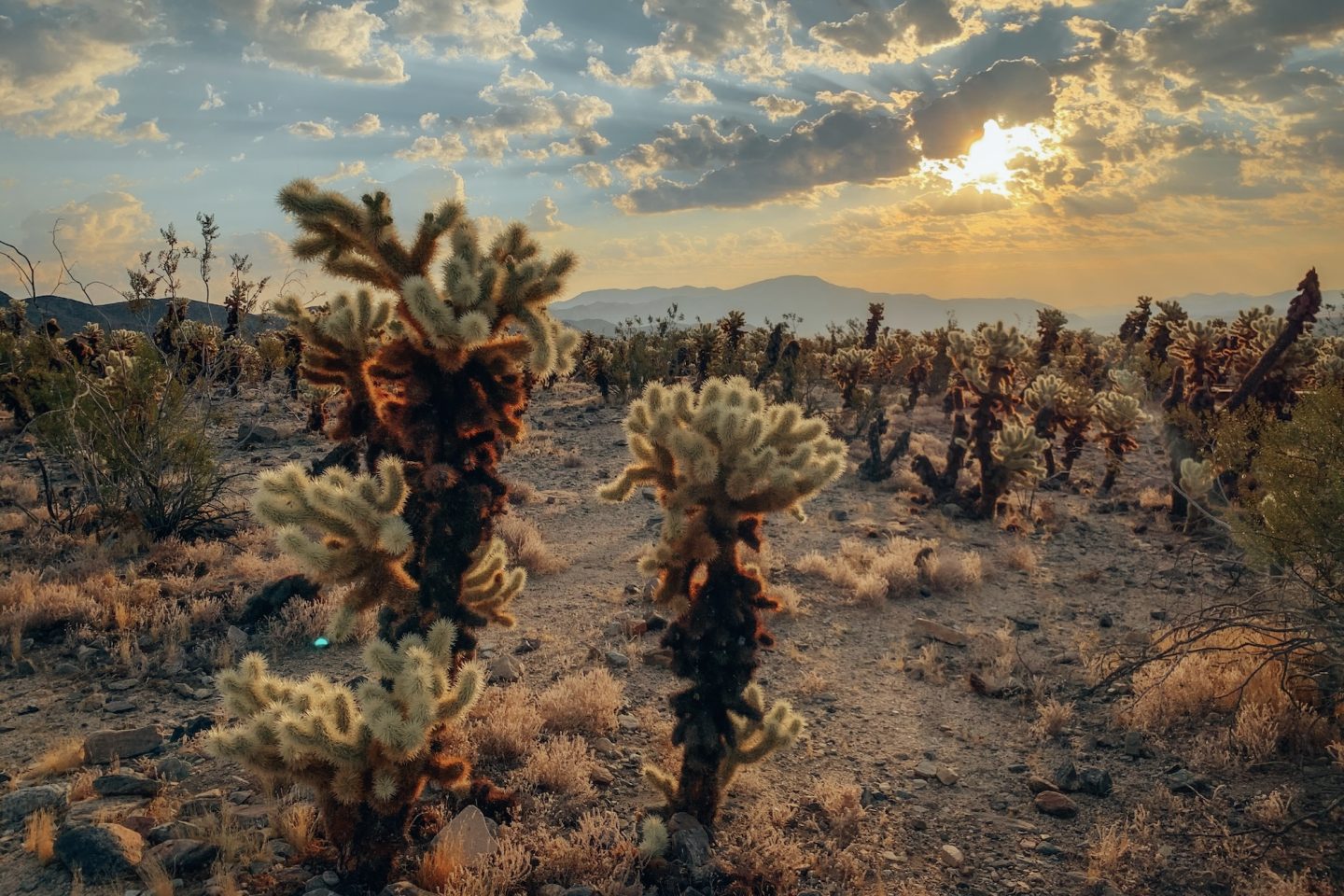
Located in Southern California just outside of Palm Springs, is Joshua Tree National Park, a captivating desert landscape characterized by its iconic Joshua trees and unique rock formations. Encompassing nearly 800,000 acres, the park straddles the ecological transition between the Mojave and Colorado Deserts. Visitors are treated to a surreal environment where the spiky Joshua trees stand amidst vast stretches of boulders and rugged mountains. The park is a haven for rock climbers, with its distinctive granite formations, such as Skull Rock and Arch Rock, providing both challenges and panoramic views. Joshua Tree National Park also boasts diverse plant and animal life, including cacti, wildflowers, and bighorn sheep. It is also a designated Dark Sky Park perfect for stargazing.
Whether exploring the Hidden Valley or hiking through the Wonderland of Rocks, Joshua Tree offers a unique blend of natural wonders, making it a haven for those seeking solace in the beauty of the desert landscape.
AVERAGE TEMPERATURES DURING THE WINTER
- Highs: 63ºF-72ºF
- Lows: 37ºF-44ºF
Check out our 5 Must Do Activities In Joshua Tree National Park article for more info and inspiration!
CHANNEL ISLANDS NATIONAL PARK
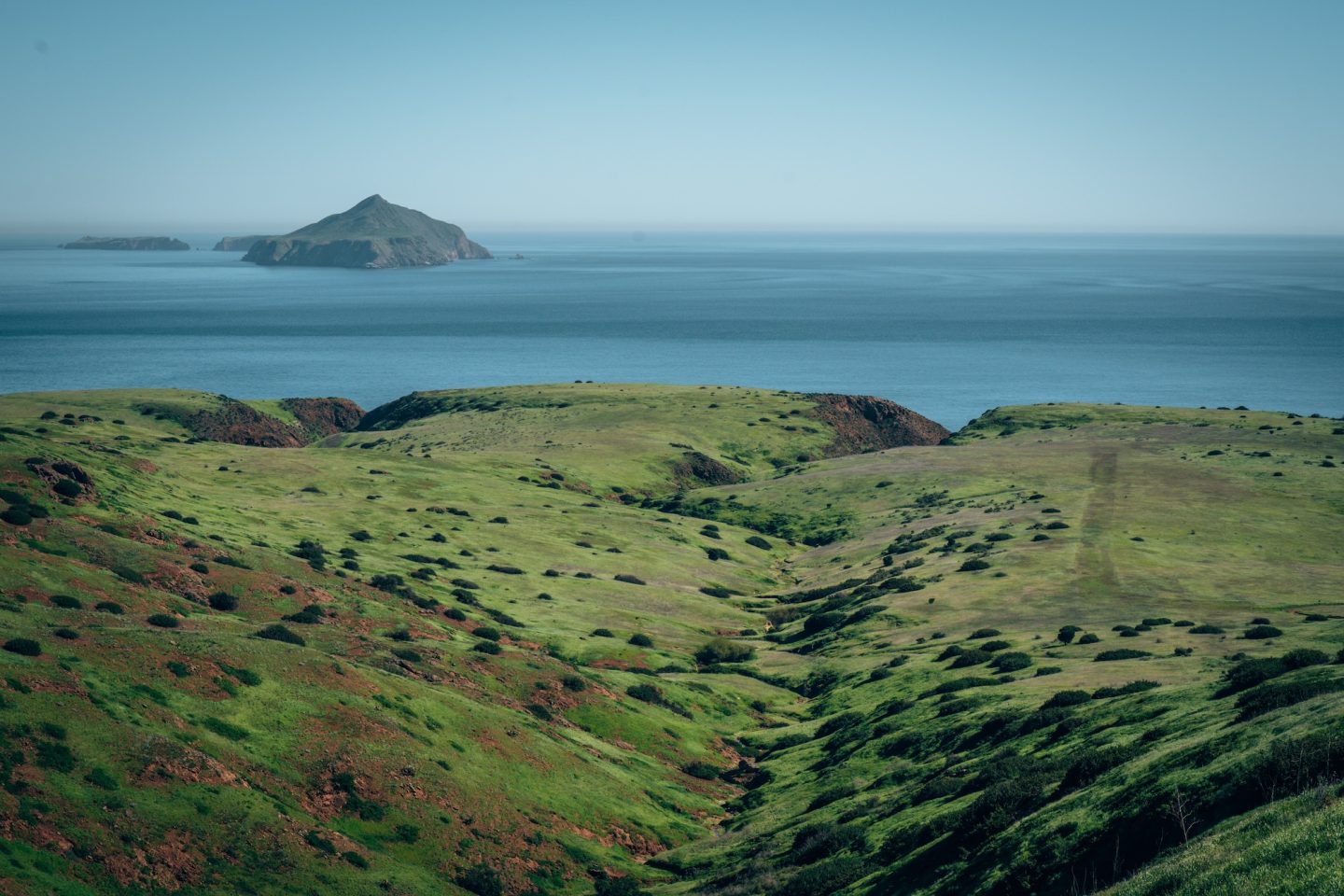
Just off the coast of Southern California, is Channel Islands National Park, an enchanting archipelago comprising five rugged islands – Anacapa, Santa Cruz, Santa Rosa, San Miguel, and Santa Barbara. Spanning 249,561 acres, the park is known for its diverse ecosystems and rich marine life. Visitors can explore sea caves, pristine beaches, and towering sea cliffs, each island offering a unique natural experience. The park is a haven for wildlife enthusiasts, with opportunities to spot seals, sea lions, dolphins, various bird species, and the Island Fox which can only be found on these incredible islands. Snorkeling and diving in the kelp forests reveal a vibrant underwater world.
Channel Islands National Park also holds significant archaeological sites, providing a glimpse into the region’s indigenous history. Accessible by boat or plane, the park offers a tranquil escape and a chance to connect with the untouched beauty of these remote islands, making it a hidden gem for nature lovers and adventure seekers alike.
AVERAGE TEMPERATURES DURING THE WINTER
- Highs: 61ºF-67ºF
- Lows: 38ºF-41ºF
Read our Ultimate Guide to Channel Islands National Park (Santa Cruz Island) article to find out more about this incredibly underrated park!
REDWOODS NATIONAL PARK
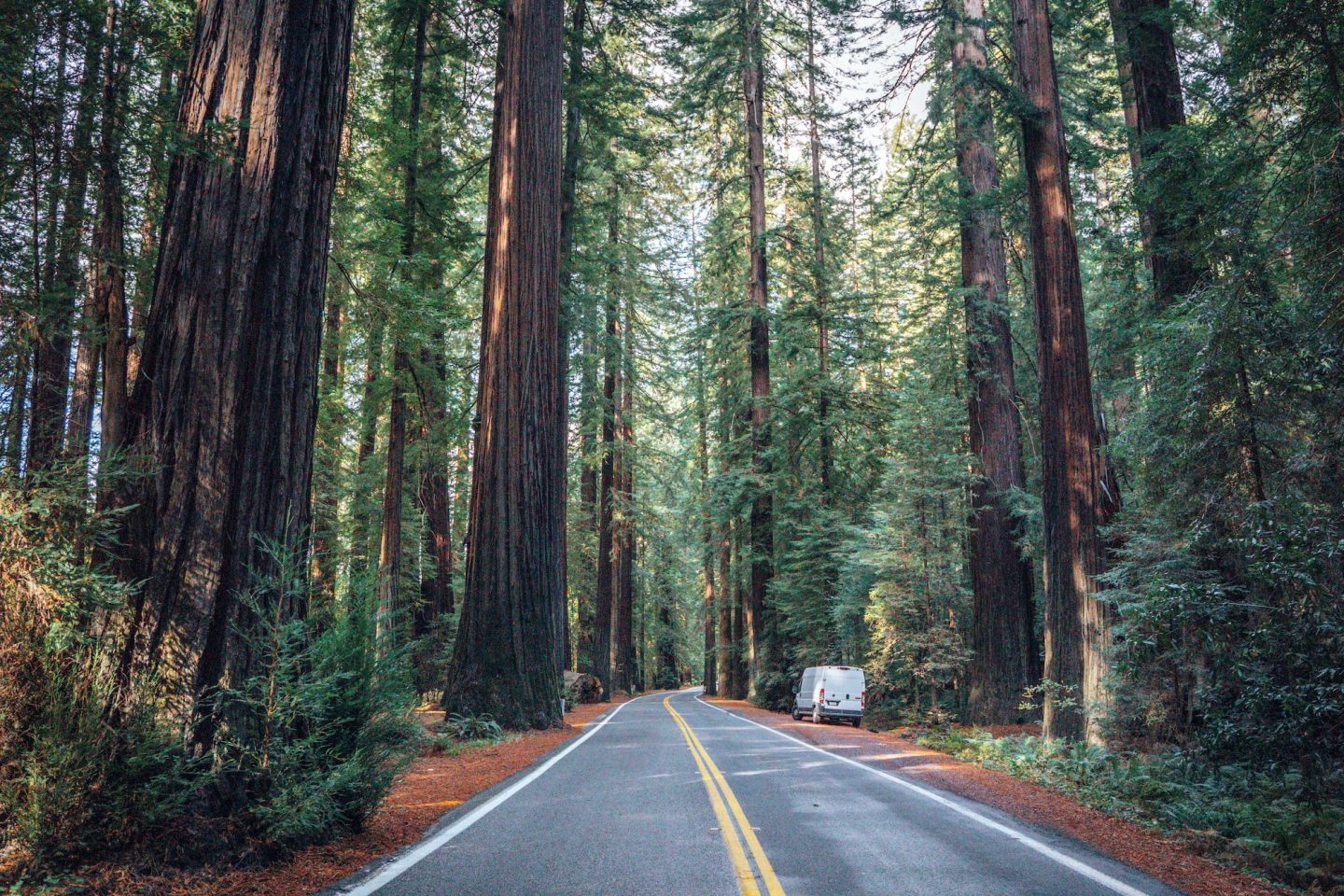
Situated along the northern California coast, Redwood National and State Parks form a sanctuary for some of the world’s tallest trees, the majestic coast redwoods. Covering over 139,000 acres, the park preserves both the awe-inspiring ancient redwood groves and a diverse coastal landscape. Towering trees like Hyperion, the world’s tallest known living tree, captivate visitors with their sheer size and age. The park offers a network of scenic trails winding through lush fern-covered canyons and along pristine rivers. Beyond the redwoods, the park extends to the rugged coastline, where sea stacks and tide pools add to the natural wonders. The park is a haven for wildlife, including Roosevelt elk and marbled murrelets. A visit to Lady Bird Johnson Grove or the Avenue of the Giants provides an immersive experience in the enchanting world of these ancient giants.
Redwood National and State Parks are an unparalleled destination for those seeking a deep connection with nature.
AVERAGE TEMPERATURES DURING THE WINTER
- Highs: 51ºF-56ºF
- Lows: 36ºF-38ºF
If you’ve never been to Redwood National Park, check out our 5 Must Do Activities In Redwood National Park to get inspired!
PINNACLES NATIONAL PARK
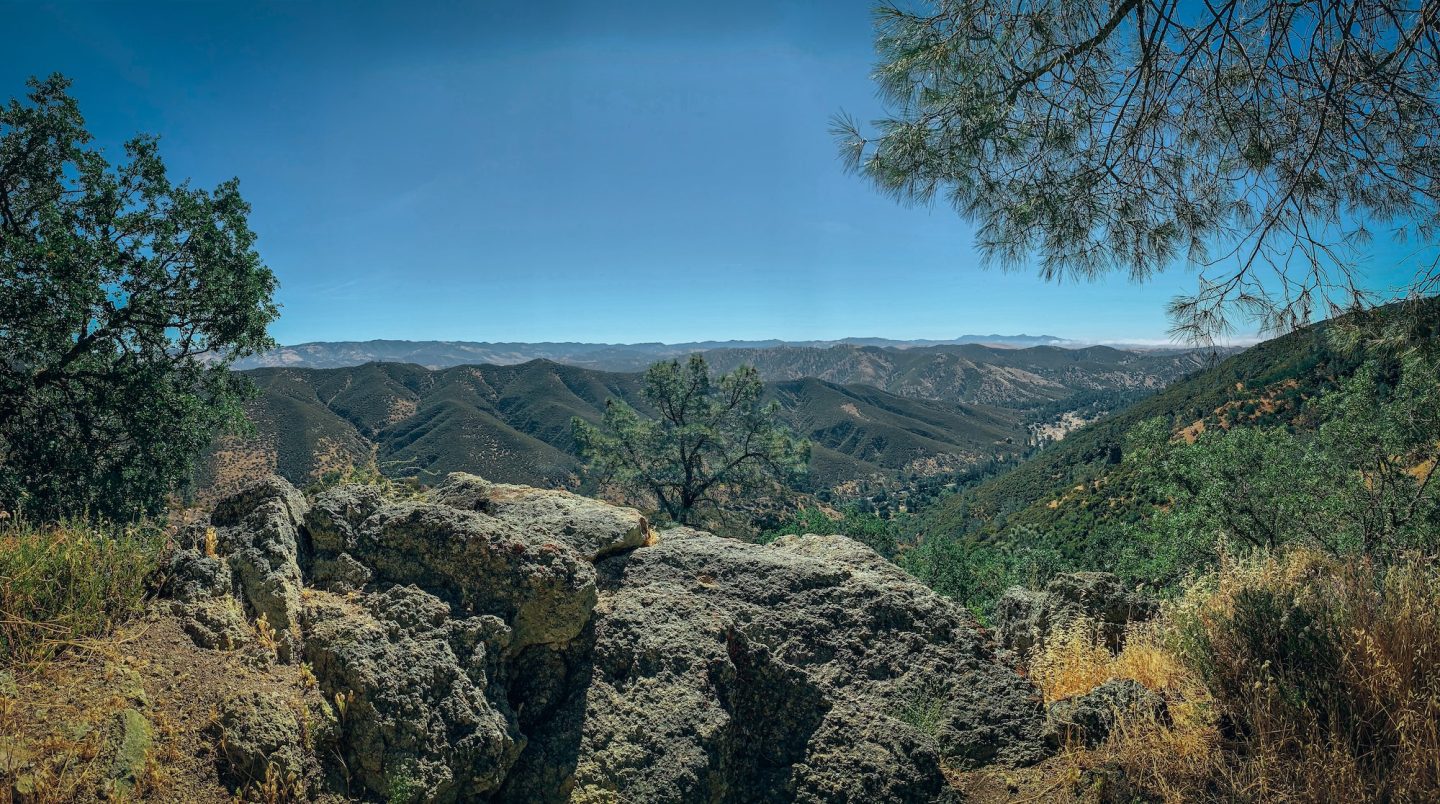
Located in central California, Pinnacles National Park is a geological wonder characterized by dramatic rock formations, talus caves, and diverse ecosystems. Covering more than 26,000 acres, the park showcases the remnants of an ancient volcanic field that has moved along the San Andreas Fault. Visitors can explore the unique rock spires, caves, and cliffs that make Pinnacles distinctive. Hiking trails lead to viewpoints with panoramic vistas, and the park is renowned for its biodiversity, providing a habitat for California condors, bats, and various bird species. The Bear Gulch and Balconies Caves offer opportunities for caving adventures amidst striking rock formations.
Pinnacles National Park’s diverse landscapes, from oak woodlands to chaparral, create a captivating environment for outdoor enthusiasts and nature lovers, making it a hidden gem in California’s national park system.
AVERAGE TEMPERATURES DURING THE WINTER
- Highs: 60ºF-68ºF
- Lows: 30ºF-34ºF
SAGUARO NATIONAL PARK
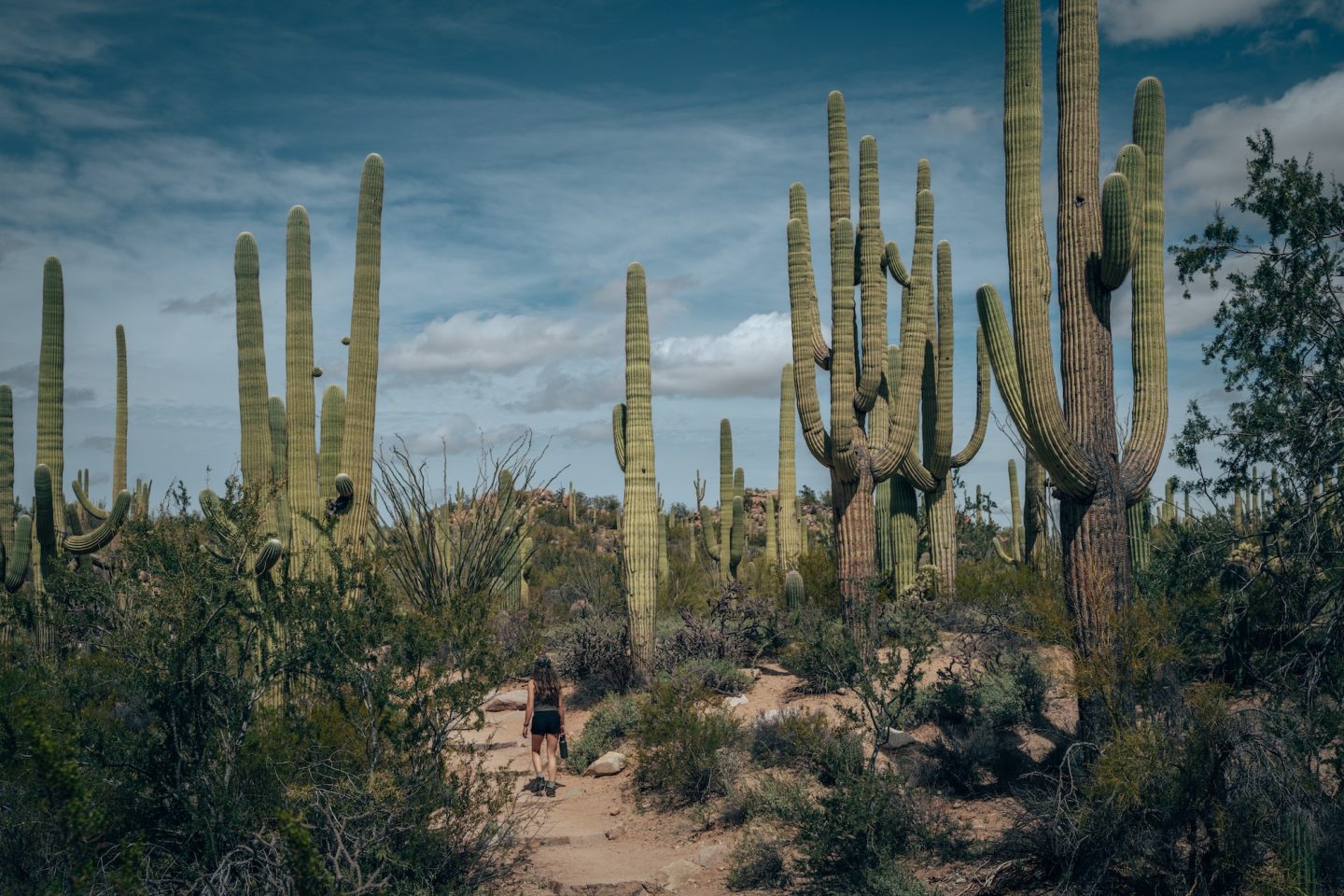
Located in southern Arizona, Saguaro National Park is a captivating desert landscape that celebrates the iconic saguaro cactus. The park is divided into two districts, the Tucson Mountain District to the west and the Rincon Mountain District to the east. Spanning over 91,000 acres, Saguaro National Park is a haven for those seeking the beauty of the Sonoran Desert. The towering saguaro cacti, with their distinctive arms reaching towards the sky, dominate the landscape. Visitors can explore scenic drives, hiking trails, and picnic areas while experiencing the unique flora and fauna adapted to the arid environment. The park also offers stunning sunset views against the backdrop of the Tucson Mountains.
Saguaro National Park provides a serene desert experience, allowing visitors to connect with the desert’s tranquility and witness the majesty of the saguaro, an enduring symbol of the American Southwest.
AVERAGE TEMPERATURES DURING THE WINTER
- Highs: 66ºF-74ºF
- Lows: 39ºF-46ºF
If you’re unfamiliar with Saguaro National Park, check out our Ultimate Guide To Saguaro National Park article to be enlightened!
WHITE SANDS NATIONAL PARK
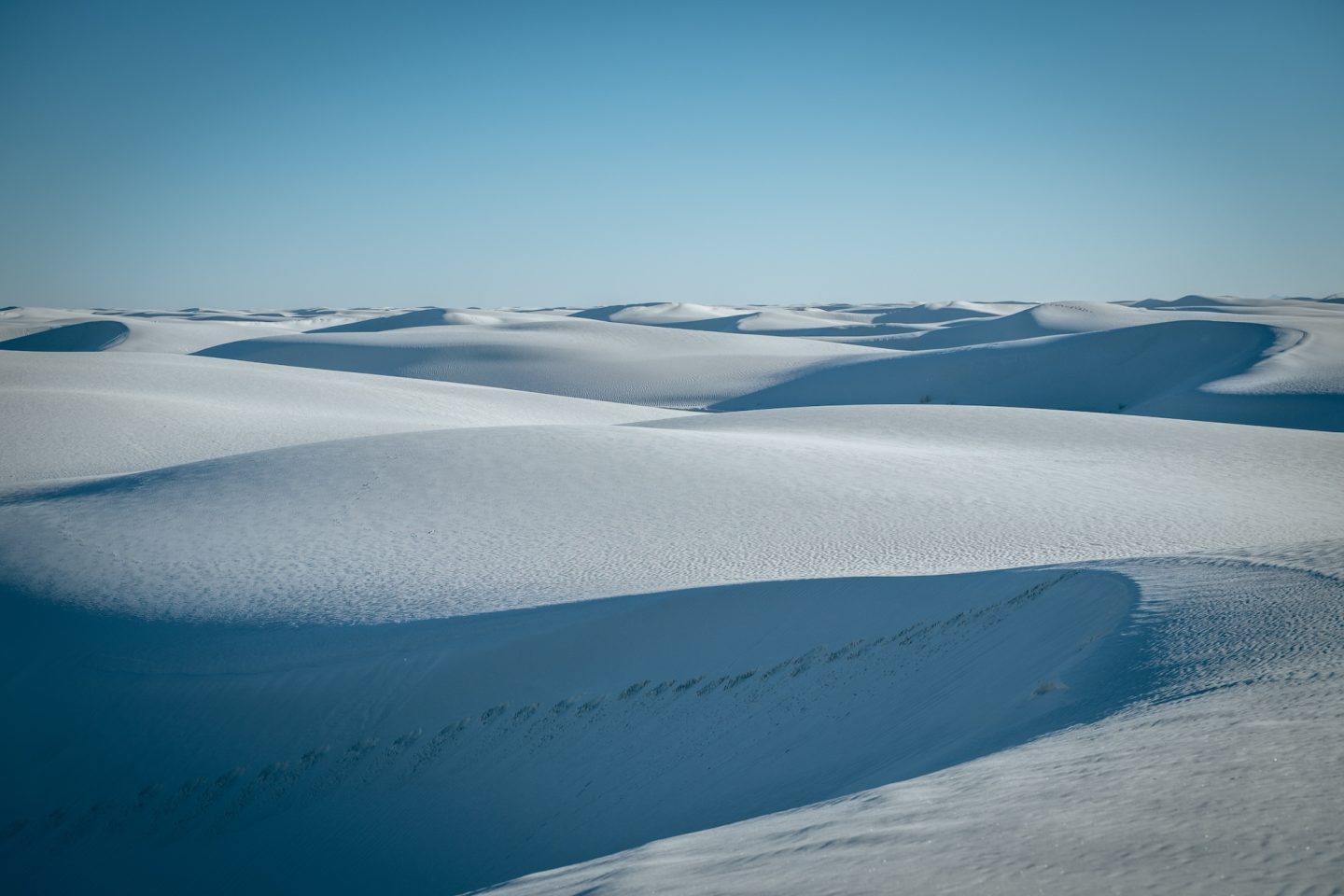
Located in southern New Mexico, White Sands National Park is a mesmerizing landscape of vast gypsum dunes that stretch across 275 square miles of the Chihuahuan Desert. The park’s iconic white sand dunes, the largest gypsum dune field in the world, create a surreal and otherworldly environment. Visitors can explore the ever-shifting dunes by hiking, sledding down the sandy slopes, or participating in ranger-led programs that highlight the unique ecology of the area. The sparkling white sands contrast against the brilliant blue skies, providing a striking backdrop for photography and relaxation. As the sun sets, the dunes take on a warm golden hue, creating a magical and serene atmosphere.
White Sands National Park is a testament to the beauty and resilience of nature, offering a one-of-a-kind experience in the heart of the southwestern United States.
AVERAGE TEMPERATURES DURING THE WINTER
- Highs: 57ºF-66ºF
- Lows: 22ºF-29ºF
White Sands is a MUST VISIT National Park. To learn more about it, check out our Ultimate Guide To White Sands National Park article.
CARLSBAD CAVERNS NATIONAL PARK
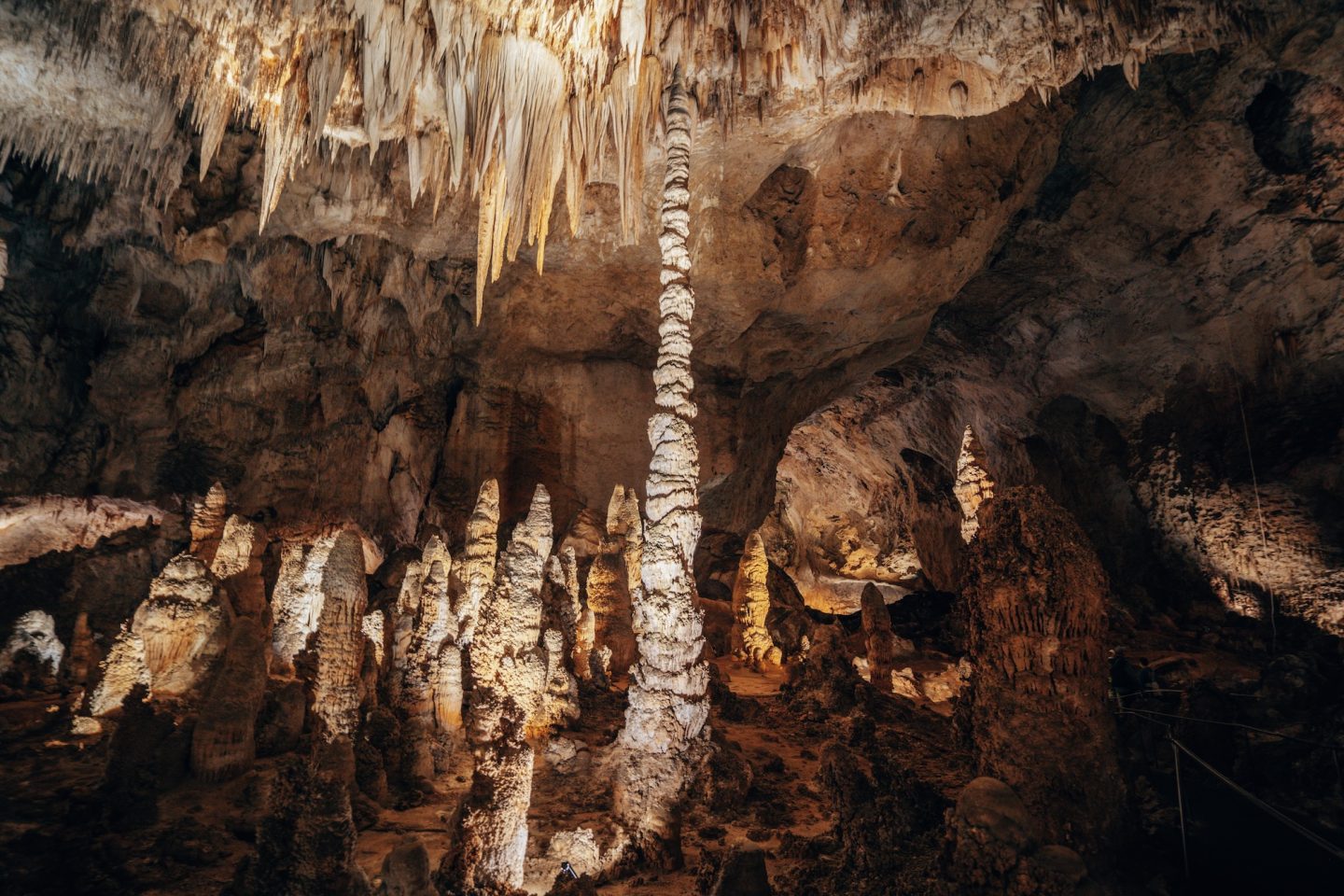
Located in southeastern New Mexico, Carlsbad Caverns National Park is a subterranean wonderland renowned for its stunning limestone caverns. The park features more than 119 known caves. Visitors can embark on a mesmerizing underground journey through the Big Room, a colossal chamber adorned with intricate stalactites and stalagmites. The park offers ranger-led tours, allowing exploration of various cave formations, including the dramatic King’s Palace and the ethereal Queen’s Chamber. The Bat Flight Amphitheater provides a unique opportunity to witness thousands of bats emerging from the cavern at dusk during certain times of the year. Above ground, the Chihuahuan Desert landscape adds to the park’s diversity, with hiking trails and scenic overlooks.
Carlsbad Caverns National Park invites adventurers to delve into the mysterious depths of its caverns and experience the awe-inspiring beauty of this underground realm.
AVERAGE TEMPERATURES DURING THE WINTER
- Highs: 54ºF-62ºF
- Lows: 31ºF-40ºF
- Cave temperatures: 56ºF year-round
GUADALUPE MOUNTAINS NATIONAL PARK
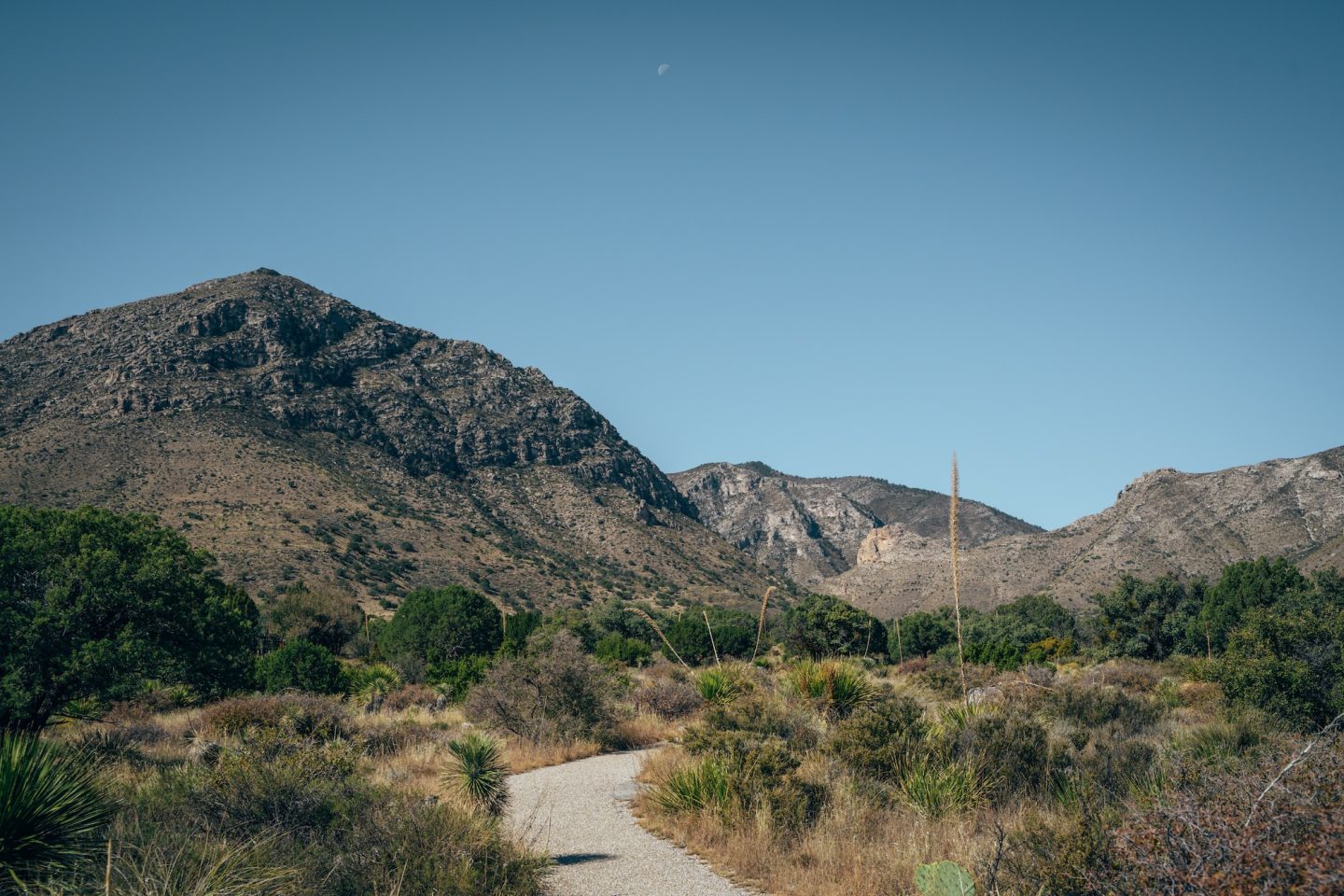
Located in west Texas, Guadalupe Mountains National Park is a rugged and majestic landscape dominated by the towering peaks of the Guadalupe Mountains. The park preserves one of the world’s most extensive Permian fossil reef systems and features diverse ecosystems ranging from desert lowlands to alpine forests. At its heart is Guadalupe Peak, the highest point in Texas, offering panoramic views of the surrounding desert plains. Hiking trails like the challenging Guadalupe Peak Trail provide access to the park’s dramatic landscapes, including canyons, limestone cliffs, and unique geological formations. McKittrick Canyon showcases a vibrant display of fall foliage, adding to the park’s natural beauty.
Guadalupe Mountains National Park is a haven for outdoor enthusiasts, hikers, and nature lovers, providing a rugged and remote wilderness experience in the heart of the Chihuahuan Desert.
AVERAGE TEMPERATURES DURING THE WINTER
- Highs: 44ºF-52ºF
- Lows: 29ºF-37ºF
BIG BEND NATIONAL PARK
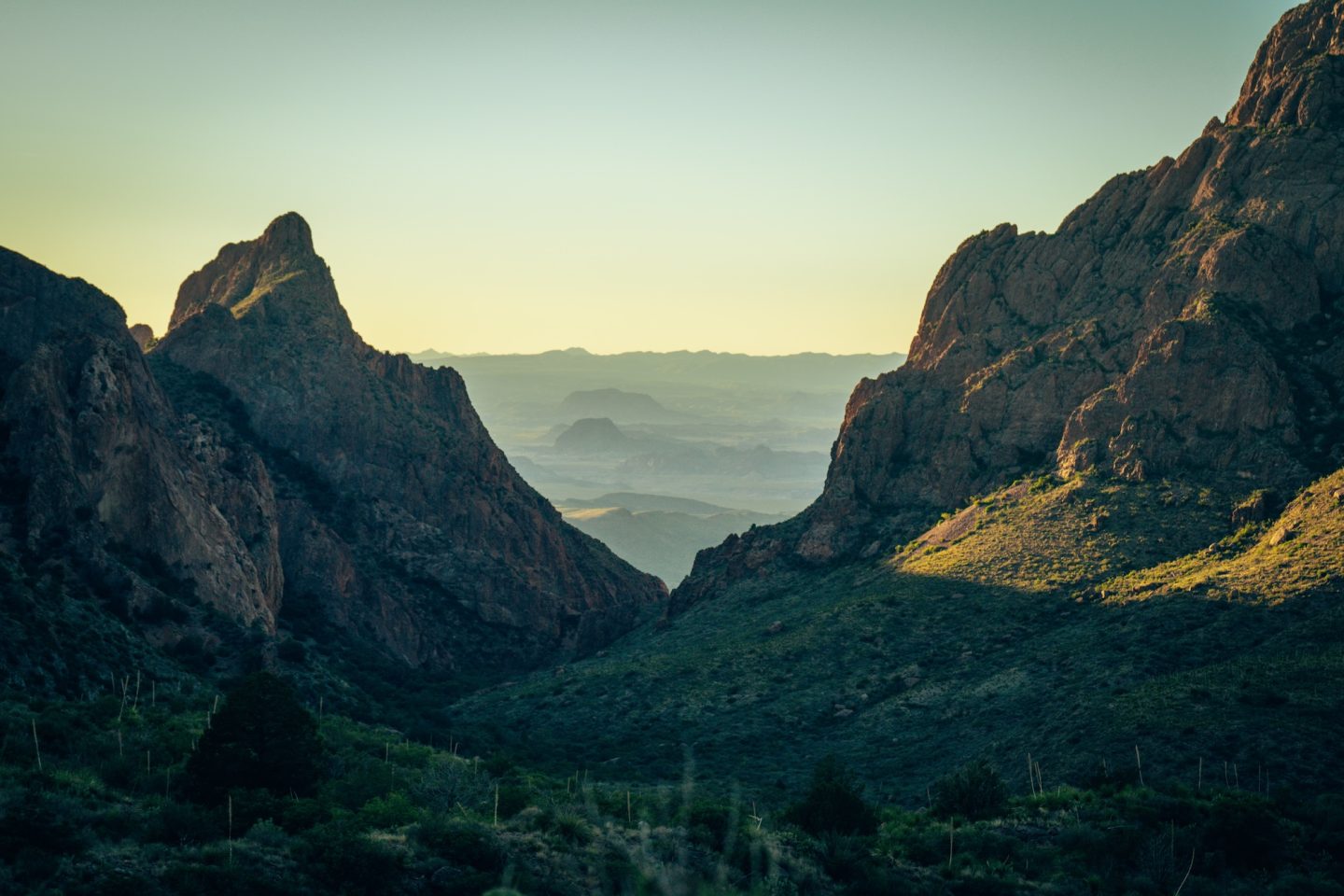
Situated in southwestern Texas along the Rio Grande, Big Bend National Park is a vast and diverse landscape encompassing over 800,000 acres. Rugged mountains, vast desert expanses, and the meandering river canyons. The park is known for its striking geological features, including the towering Chisos Mountains and the deep canyons of Santa Elena, Mariscal, and Boquillas. Visitors can explore a variety of ecosystems, from the Chihuahuan Desert to the lush riparian zones along the river. Hiking trails like the South Rim Trail offer breathtaking panoramic views, while the iconic Santa Elena Canyon provides a dramatic backdrop for river adventures.
Big Bend is a haven for birdwatchers, stargazers, and outdoor enthusiasts, with opportunities for activities such as river rafting, birding, and hot spring soaks. The park’s vastness and diverse ecosystems make it a unique and captivating destination for those seeking an immersive experience in the untamed beauty of the American Southwest.
AVERAGE TEMPERATURES DURING THE WINTER
- Highs: 58ºF-65ºF
- Lows: 39ºF-46ºF
BISCAYNE NATIONAL PARK
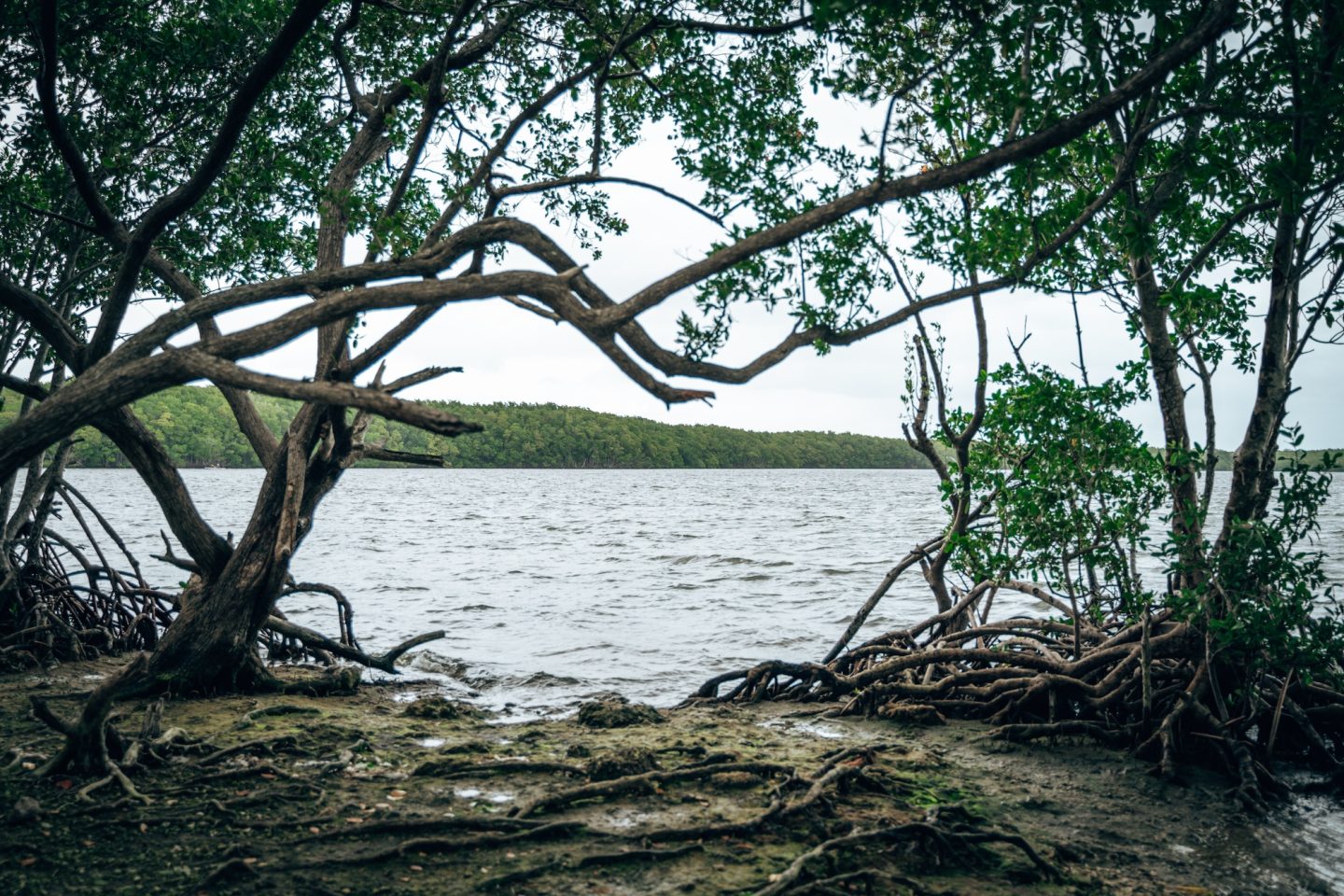
Located in southern Florida, Biscayne National Park is a unique and diverse park that protects Biscayne Bay and its surrounding coral reefs, islands, and shoreline. Encompassing 173,000 acres, the park is predominantly underwater. This makes it an ideal destination for snorkeling, diving, and exploring vibrant coral ecosystems. Visitors can discover an array of marine life, including colorful fish, sea turtles, and various coral species. And the park also includes the northernmost Florida Keys, offering opportunities for boating, fishing, and island exploration. Boca Chita Key features a historic lighthouse and scenic views of the bay.
Biscayne National Park provides a sanctuary for both marine and terrestrial environments. This makes it a haven for water enthusiasts, nature lovers, and those seeking a tranquil escape in the tropical beauty of southern Florida.
AVERAGE TEMPERATURES DURING THE WINTER
- Highs: 65ºF-72ºF
- Lows: 57ºF-67ºF
EVERGLADES NATIONAL PARK
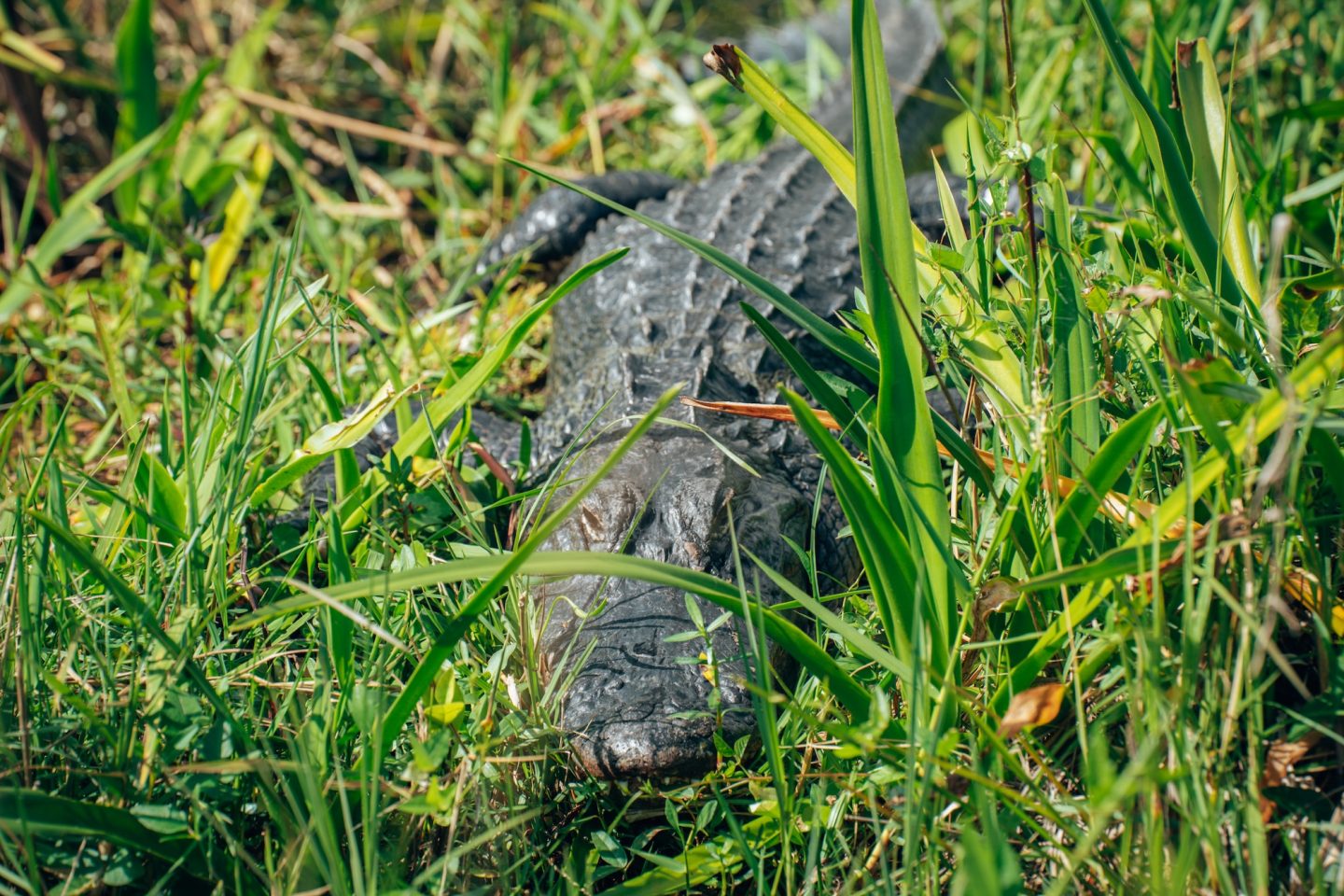
Located in southern Florida, Everglades National Park is a sprawling wilderness that preserves the largest tropical wetland ecosystem in North America. Encompassing 1.5 million acres, the park is known for its unique mix of habitats, including sawgrass prairies, mangrove forests, cypress swamps, and coastal estuaries. Visitors can explore the park through a network of trails, boardwalks, and waterways, offering opportunities for wildlife viewing, birdwatching, and photography. The park is home to a diverse array of species, including alligators, manatees, panthers, and a multitude of bird species. The iconic River of Grass, shaped by slow-moving water, defines the landscape and showcases the intricate balance of nature in this subtropical wilderness.
Everglades National Park provides a vital refuge for biodiversity, making it a must-visit destination for those seeking an immersive experience in one of America’s most unique and ecologically significant ecosystems.
AVERAGE TEMPERATURES DURING THE WINTER
- Highs: 76ºF-82ºF
- Lows: 56ºF-64ºF
DRY TORTUGAS NATIONAL PARK
Situated 70 miles west of Key West in the Gulf of Mexico, Dry Tortugas National Park is a remote and pristine destination known for its historical significance and vibrant marine life. The park encompasses seven small islands, including Garden Key where the iconic Fort Jefferson is located. Accessible only by boat or seaplane, the park is renowned for its crystal-clear waters, coral reefs, and abundant marine biodiversity. Snorkeling and diving opportunities abound, allowing visitors to explore the vibrant underwater ecosystems teeming with colorful fish and coral formations. Fort Jefferson, a 19th-century coastal fortress, stands as a testament to the area’s rich history and provides a glimpse into the past.
The isolation of Dry Tortugas National Park offers a unique escape, blending natural beauty, history, and marine exploration in a remote and tranquil setting.
AVERAGE TEMPERATURES DURING THE WINTER
- Highs: 74ºF-79ºF
- Lows: 65ºF-70ºF
VIRGIN ISLANDS NATIONAL PARK
Situated on St. John in the U.S. Virgin Islands, is Virgin Islands National Park, a tropical haven spanning over 12,000 acres. This paradise combines pristine beaches, lush forests, and vibrant coral reefs. Visitors can explore scenic hiking trails, discover ancient petroglyphs, and enjoy breathtaking overlooks. The crystal-clear waters offer excellent snorkeling opportunities, with Trunk Bay standing out for its powdery white sand and underwater snorkeling trail.
This national park seamlessly blends natural beauty, recreational activities, and cultural heritage. This makes it a sought-after destination for a perfect Caribbean getaway.
AVERAGE TEMPERATURES DURING THE WINTER
- Highs: 79ºF-82ºF
- Lows: 67ºF-70ºF
AMERICAN SAMOA NATIONAL PARK
Not many people realize this, but there is a United States National Park located in the South Pacific called American Samoa National Park. American Samoa National Park, located on the islands of Tutuila, Ofu, and Ta‘ū in the South Pacific, is a tropical paradise known for its stunning landscapes and rich Polynesian culture. Encompassing lush rainforests, coral reefs, and ancient archaeological sites, the park offers a diverse range of experiences. Visitors can explore scenic hiking trails, such as the popular Mount ‘Alava Trail on Tutuila, which provides panoramic views of the surrounding ocean. The park’s coral reefs teem with marine life, making it a haven for snorkeling and diving enthusiasts. Cultural sites, including traditional Samoan village remains and historic structures, provide insight into the islands’ heritage.
American Samoa National Park offers a unique blend of natural beauty and cultural richness. This makes it a hidden gem in the Pacific for those seeking an immersive island experience.
AVERAGE TEMPERATURES DURING THE WINTER
- Highs: 74ºF
- Lows: 85ºF
BEST U.S. NATIONAL PARKS TO VISIT IN THE WINTER
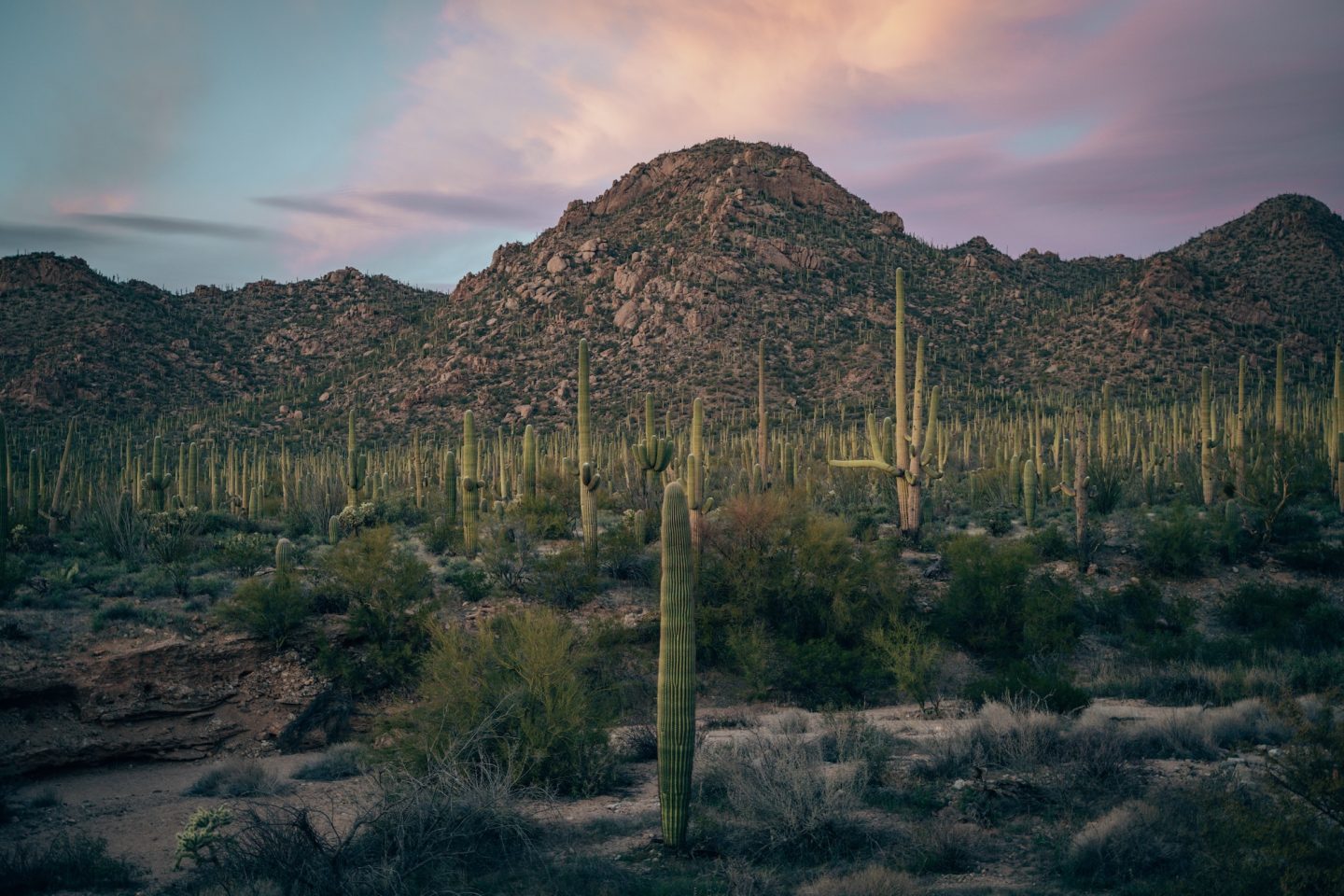
If you are someone who finds themselves often wanting to escape the winter weather, and either relax or enjoy some warm adventures, we hope this article has provided some inspiration. We’ve been 14 of these 17 best U.S. National Parks to visit in the winter, and we can confidently say they are some great escapes! Let us know what you thought of this article below in the comments!
If you’re looking for further National Park inspiration, check out our Best Time To Visit California’s National Parks article!
EXPLORE CALIFORNIA LIKE NEVER BEFORE
While this article touches on some of California’s national parks, there is still a TON of information that we simply could not pack in to a single article. That’s where our epic interactive map of California comes in handy. Within this map and guide, you will find over 270 points of interest with detailed information about each location – cost, seasonality, dog-friendliness, and much much more! It also answers the question of, “what is there to do in each place?” Not much of a planner? No worries! We also have curated itineraries to make the planning process easier for you. And if that isn’t enough, book a call with us or have us create a custom itinerary for you! We are here to help!